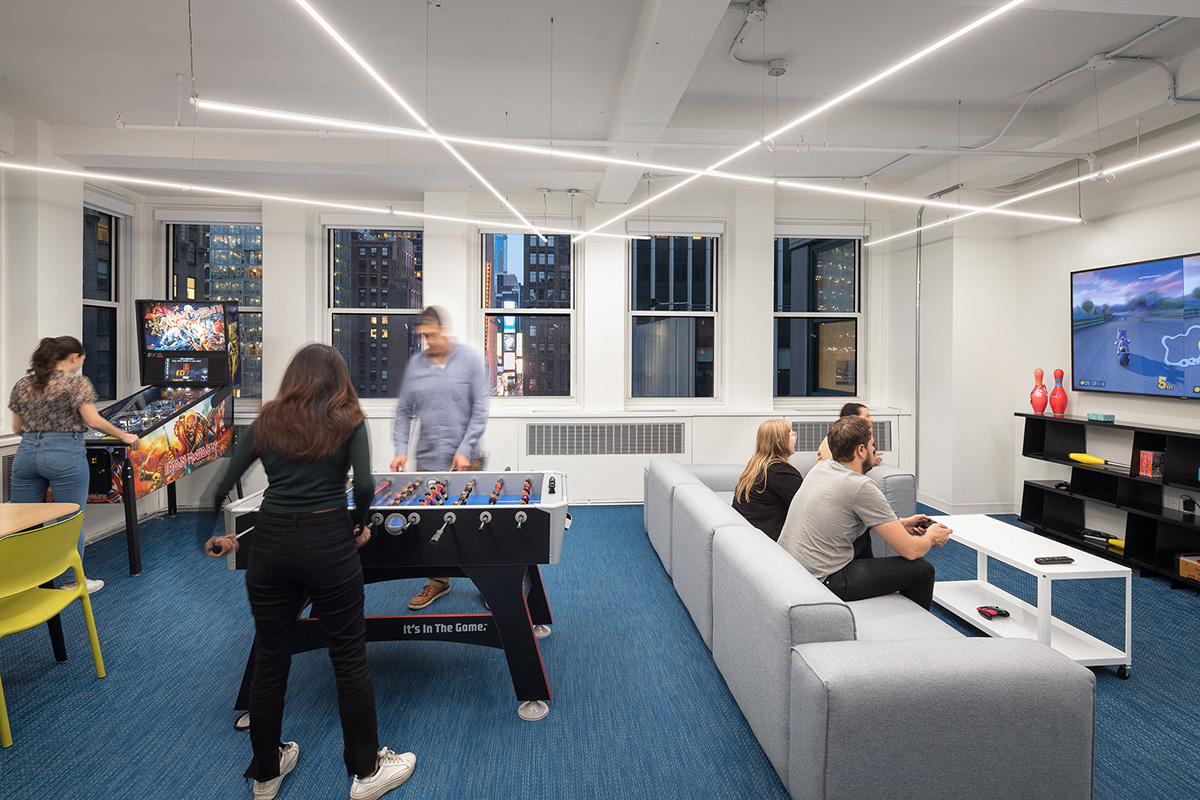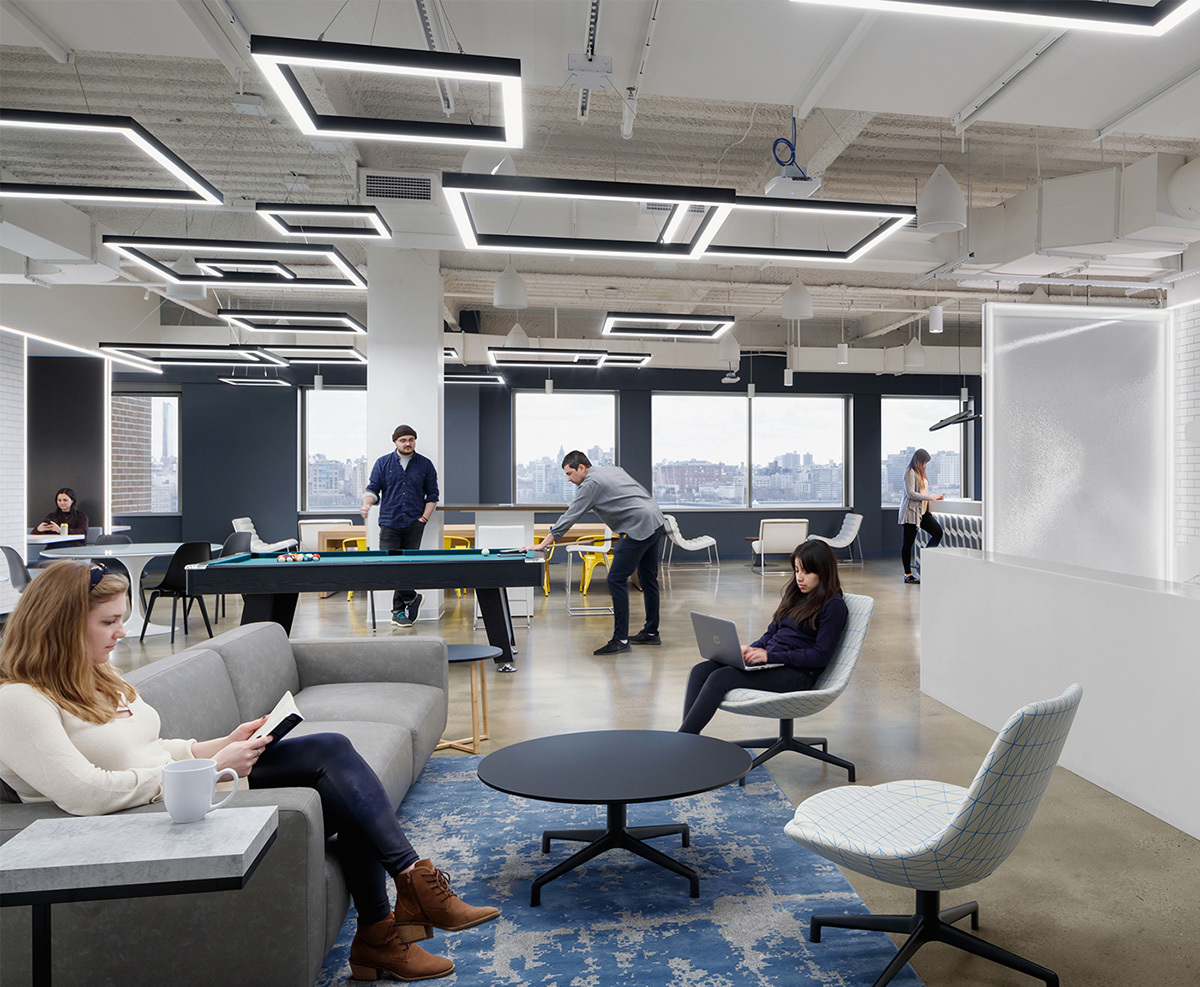The Straight & Narrow - Linear Light Specification
Lighting products come in all shapes and sizes; however, when a space requires architectural congruence with broad geometry, elongated lines, or planar simplicity, few products work as well as linear lighting does.
With about a million and one similar but different linear products in the market today, picking the right linear specification for your job can be a bit overwhelming. All linear products are not created equal; and it can be hard to feel confident that the linear product you select for your project is going to meet your varied design expectations and project requirements.

SUSPENSION
Aircraft cable mounting is the most flexible as it is field adjustable. Typically limited to interior applications.
Stem mounting requires a specific length to be specified with capability of field cutting and rethreading for field adjustability. Good for natatorium, exterior, and seismic applications. Ball and socket canopy accessories are available to accommodate sloped ceiling conditions.
RECESSED
Trimmed, usually about ½” wide on all sides, requires a finish selection.
Trimless, typically provided with a mud-over application flange to achieve a clean “trimless” aesthetic.
Some true trimless options are available for use in millwork.
For stucco, the depth of the product’s flange should be coordinated carefully with finished stucco application, to ensure lens/ trim is flush with finished surface.
For ACT, 9/16”, 15/16” and 9/16” slot are standard grid types. “Grid” mounting may be the only specification option detailed, you’ll want to confirm compatibility or contact the factory for required accessories.
For wood, trim or trimless can be used depending on the aesthetic. Verify compatibility with ceiling thickness with the manufacturer. Several manufacturers also offer a specific wood ceiling trim option.
Specialty ceiling types such as Techzone, metal, etc, require coordination with the manufacturer to ensure the correct mounting option is selected. Several ceiling manufacturers have partner products or can suggest compatible products.
Linear lighting with mechanical air supply allows multiple disciplines to be concealed in a single form. A larger aperture is required to accommodate the depth needed for the air supply.


SURFACE
The fixture can be mounted directly to the surface (ceiling, wall, top of partial height wall) with field drilled holes or via factory supplied knockouts. Greater flexibility in placement with field drilled holes.
Factory supplied wall brackets provide a quick and easy install option, sometimes require use of j-box for mounting. Available in different depths to provide slight offset from wall surface.
Span mount end caps serve as surface mounting points. Engineered to account for building movement over time or forces of nature. Individual fixture span length is limited, with larger fixture spans requiring intermediary suspension mounting points.
Mullion mounted linear fixtures blend seamlessly into the curtainwall system, making indirect canopy accents, façade washing, and enhanced entry illumination effortless. Coordination with selected curtainwall system manufacturer required.
CUSTOM
Combinations of above-mentioned mounting styles and custom engineered solutions are commonly offered to allow for endless architectural integration.

Length is a consideration that begins with the desired design aesthetic or coverage application, but usually ends with cost and lead time considerations. In most cases, custom engineered or exact length lighting takes longer and costs more than pre-engineered or off-the-shelf product.
Individual Units
Standard nominal lengths typically come in 2 and 4 foot increments as they were engineered initially to use fluorescent lamps. 12 feet is typically the maximum individual unit length.
With LED, per foot and exact lengths to fractions of an inch are available at a premium.
Continuous
Typically over 12’ in length, long rows of linear light are available by joining smaller individual units together.
Whether recessed, surface mounted, or suspended, adequate fastening to structure is required to support the fixture’s overall weight.
It is common for field conditions to change after the fixture has arrived on site. Many manufacturers offer standard solutions such as telescoping trays that allow 3 to 12 inches of flexibility and field cuttable fixture bodies and lenses that allow the installer to meet field conditions. When field conditions require more or less forgiveness than can be accommodated with a boxed solution, the manufacturer will custom engineer a quick and cost-effective solution.
Pattern
“L”, “U”, “T”, “X”, Square, Rectangle, Star, the geometric possibilities are nearly endless. However, there are definite limitations with manufacturers and their tools.
Minimum angles of tolerance for cutting extrusions and lenses exist in production, so even though you can sketch/render it, the manufacturer may not be able to manufacture it exactly according to your design.
Co-planar angles (transitions from one plane to the next – ceiling to wall) have additional limitations at the transition point. The angle of approach to the transition point/corner may cause issues with the lens widths meeting up clean edge to edge. In some instances, you may select (2) different aperture lenses to achieve the desired intersection.
Aperture is the width of the linear light form. Historically engineered to fit a fluorescent tube and required optical components, LED technology has allowed smaller and smaller forms into the market.
1.125”, 1.5” 1.67”, 2.25”, 3.5”, 3.57”, 4.0625”, 5.06”, or … The width of the lens may vary slightly between manufacturers, but generally widths range from 1” to 6” in nominal inch increments to meet specific aesthetic and architectural requirements.
Typically, the narrower the width, the higher the luminance of the lens surface.
Performance of lighting is critical to how the lighting complements and enhances architecture. The amount, direction, and controllability of the light all affect how we use and interact with a space.
Output
Standard (usually low, medium, and high) and custom tuned (within a given range) outputs are available for specification.
It is recommended to perform photometric calculations using manufacturer’s IES files to determine the appropriate output, spacing, and configuration of a lighting product within a space.
A standard output selection coupled with dimming control provides capability of on-site fine tuning and flexibility of use, typically with less coordination and cost than a custom tuned output specification.
Dimming
The industry “standard” dimming type for linear lighting is 0-10V; there are several other dimming technologies available through utilization of specific drivers.
It is important that the driver is compatible with the dimmer switch / control system to function properly.
Additional control types such as “warm dim” and “color tuning” which shift color temperature alongside light output.
Distribution
Direct lighting, downwards – Lambertian for general ambient light, asymmetric for perimeter directed light towards a surface or space, wall wash, grazing, and point source integration.
Indirect lighting, upwards – batwing for wide spacing and uniform ceiling illumination, asymmetric for perimeter uplight, and narrow or graze.
Power Feed considerations are important to the overall success of architectural integration.
Top, side, bottom – you can bring power into the fixture through suspended power feed cables, factory provided knockout locations, field drilled power feed holes, and special power feed end caps.
For suspended fixtures, power feed distances should be reviewed to coordinate mounting and power location requirements. Custom power feed points can be accommodated.
Long continuous runs may be able to accommodate long distances between power feed locations. Consult technical information to determine the maximum power feed run length based on the specified fixture output and project electrical requirements.
Ratings are offered to comply with specific project and code requirements.
Dry location
Interior application only, subject to temporary dampness and well ventilated.
Damp location
Interior and exterior applications, normally or periodically subject to condensation of moisture.
Wet location
Interior and exterior applications in which water or other liquids may drip, splash, or flow on or against…a light fixture.
For exterior applications, determine the level of water protection required. Under canopy applications do not require the same level of protection as open to sky applications.
Wet location products can be either fully sealed or provided with weep holes. If the product is fully sealed, then there will likely be an IP rating of 65 or higher. Weep holes are engineered to allow water to pass through the fixture without accumulation.
Condensation is a common occurrence with weep holes; however, it is not typically problematic to the electrical components as the water is permitted to exit.
IC Rating
Insulation contact (IC) rating indicates if a recessed fixture is suitable for placement within direct contact of the building’s thermal insulation.
IC rated fixtures have a high heat tolerance, with no concern of flammability.
Non-IC rated fixtures should be installed in open ceiling conditions where potential for insulation contact is at least 3 inches away.
Chicago Plenum Rating
Fixture housings are airtight and all wiring is sealed off and gasketed from the plenum air space to comply with City of Chicago Environmental Air (CCEA) Electrical Code.
With its understated and discreet form, flexible mounting, and cutting-edge LED technology, linear lighting is one of the most effective lighting product options to achieve architectural design continuity.
